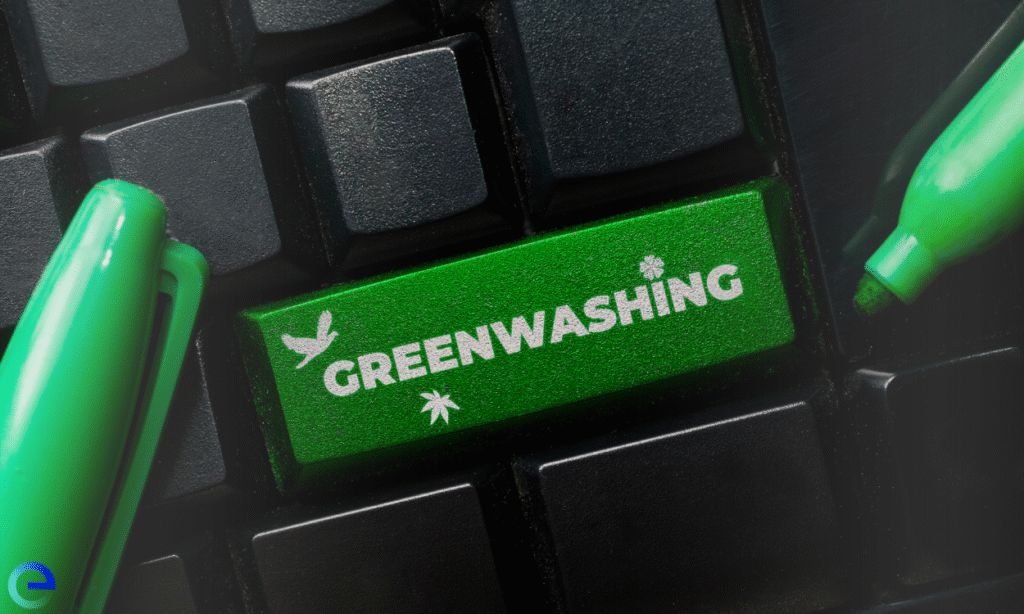
According to a study by Environmental Resources Management (ERM), in the United States alone, 68% of corporate leaders admit they’ve engaged in greenwashing, which shows why we urgently need to focus on anti-greenwashing measures. All but one of these environmental claims about products and services turn out to be ambiguous, deceptive, or completely unfounded.
Companies face higher stakes than ever before with ESG transparency, and by exaggerating or falsifying their environmental achievements, they risk serious consequences. Smart investors that watch ESG performance closely can easily move away from companies that engage in greenwashing. Let’s not ignore consumers who keep reminding us that they are willing to pay extra for products that protect our environment, making honest environmental claims both good business and the right thing to do.
Greenwashing keeps changing its shape with different levels, forms, and shades. Companies need strong safeguards to ensure their ESG reporting remains honest. Regulatory bodies worldwide have responded by creating anti-greenwashing rules like the EU’s proposed guidelines that require public companies to reveal their climate-related risks and ESG governance structure. Companies that aspire to succeed in this ever-changing digital world must know how to build effective anti-greenwashing protection since their trust, compliance, and competitive edge depend on it.
Greenwashing is a major challenge to ESG transparency. We often notice how companies easily make false or misleading claims about their environmental performance or the impact of their business, products, or services. In March 2025, the European Commission’s research on environmental claims was published, where it was found that among 356 of the EU traders of second-hand goods that project the positive impact they have on the environment, 28% of them make false or deceptive statements and do not even provide enough evidence. That explains that even with increasing regulatory scrutiny under forthcoming Green Claims and Empowering Consumers directives, companies still choose a misleading attitude.
Greenwashing can crush consumer trust while seriously interrupting real climate action. Most surveys now reveal that Gen Zers are very skeptical when brands talk about ESG. It also disrupts the information investors require when making decisions, which can lead to financial losses and damage company reputations. The European Securities and Markets Authority (ESMA) mentions that “greenwashing” happens when “sustainability-related statements, declarations, actions, or communications do not clearly and fairly reflect the underlying sustainability profile of an entity”.
Let’s explore some of the most common ways ESG washing occurs and how they show up:
New anti-greenwashing rules require companies to provide solid proof when making environmental claims. The UK Financial Conduct Authority has enforced a rule to safeguard consumers by ensuring the truthful description of sustainable products. The EU’s Green Claims Directive requires independent bodies to scrutinize sustainability claims before companies can publish them.
These rules affect every industry, but some sectors face further examination than others. The energy sector, for example, confronts growing pressure about its sustainability claims. BP has regularly dealt with complaints about misleading ads. Companies must now take a full look at their green practices and how they communicate them so they are compliant with the new rules.
Greenwashing causes complications that go way beyond the reach and influence of public relations. Organizations that deceive about their environmental efforts face serious risks. These risks come in three forms – legal, reputational damage, and financial implications.
Regulatory bodies worldwide are taking action instead of just providing guidance about ESG claims. Companies caught greenwashing could face heavy fines, lawsuits, and other legal troubles. The UK’s Competition and Markets Authority plans to start enforcing its Green Claims Code from Autumn 2025. Deutsche Bank’s asset management division paid €25 million in fines because they misled investors about ESG credentials. The SEC’s enforcement Taskforce on Climate and ESG issues has already made several enforcement decisions. Yes, it is risky to make claims that create gaps between reality and what consumers understand, even if these claims are technically true.
Companies that fall into the net of greenwashing risk falling short on credibility and distrust from people. Companies need time and a lot of investing to rebuild trust once it’s lost. This loss of trust affects relationships with everyone involved, especially since 85% of investors say greenwashing is a bigger issue now than 5 years ago.
Studies indicate that greenwashing publicity has a negative impact on stock market performance. Even if the companies have improved ESG scores, they can still risk losing market value if they practice greenwashing. Manufacturing companies usually confront greater financial deficits than service companies. Markets in Asia-Pacific exhibit a quicker and stronger response to these issues. The average regulatory fine for greenwashing can reach 4% of global revenue, sometimes up to 10%, creating major losses and causing investors pull out their investments.
Regional priorities shape anti-greenwashing regulations globally. European Union stands at the forefront with detailed frameworks. Progress in North America has been steady, though federal enforcement in the US seems less prioritized now. Australian authorities have put in place guidance that requires environmental claims to meet eight principles. South Korea could become Asia’s first nation to specifically target greenwashing through its proposed Amendment to Environmental Technology and Industry Support Act.
UK’s Financial Conduct Authority put its anti-greenwashing rule into action on May 31, 2024. This rule applies to all FCA-authorized firms and demands sustainability-related claims to be correct, clear, complete, and comparable. UK Competition and Markets Authority created the Green Claims Code in 2021 that outlines six guiding principles.
EU Green Claims Directive, first proposed in March 2023, wanted to ensure environmental claims were proved and verified. European Commission in June 2025 has announced that does not intend to withdraw it stressing that green claims have to be included in a more reliable context. All the same, EU’s Empowering Consumers for the Green Transition Directive remains active.
SEC formed a Climate and ESG Task Force in 2021 that was disbanded in September 2024. The Commission revised its Names Rule to ensure investment fund names reflect 80% of holdings accurately. Chinese regulators have also implemented guidelines for absolute language use in advertising.
Organizations must implement strong anti-greenwashing safeguards to curb the rising tide of ESG misinformation. These measures ensure authentic sustainability reporting and protect stakeholder trust.
ESG needs to be embedded directly into governance structures instead of being treated as afterthoughts. Organizations can ensure their leadership stays focused on sustainability goals by linking ESG performance to executive pay. Strong internal controls help companies detect potential greenwashing problems before they become public issues.
Third-party assurance turns ESG claims from simple declarations into verifiable, trusted disclosures that hold up under scrutiny. Independent verification reduces greenwashing risks substantially. About 91% of businesses now employ market intelligence software to avoid non-compliance and reputation damage.
The adoption of established frameworks like GRI, SASB, TCFD, and CDP offers structured guidance for transparent ESG reporting. These frameworks help create consistent, comparable disclosures and show dedication to internationally recognized standards.
Detailed training enables employees to understand risky terminology and appropriate language for sustainability contexts. Well-designed programs help teams to spot common greenwashing patterns and embed responsible communication practices across the organization.
NLP technologies identify inconsistencies in sustainability claims by analyzing massive data sets. AI systems compare public statements with actual environmental performance and detect gaps between claims and real-life indicators.
Greenwashing can be threatening to businesses worldwide. Stakeholders require evident sustainability actions; therefore, companies that make environmental arguments based on deceptive information jeopardize everything from receiving heavy regulatory fines to lasting damage to their reputation and major financial losses. The price of deception exceeds any short-term marketing gains.
Regulatory bodies worldwide have tightened their frameworks to curb misleading ESG claims and enforce anti-greenwashing rules that aim to push more companies toward accountability. Although the EU Green Claims Directive has faced setbacks, the proposal is still on hold, and there is no intention to withdraw it, emphasizing the aspiration of regulators for more scrutiny of corporate environmental statements.
Organizations now must build detailed anti-greenwashing safeguards to protect themselves and stakeholders. Reliable internal governance structures provide the foundation for transparent ESG reporting. Third-party verification turns sustainability claims into credible, trustworthy disclosures, while new technologies provide the tools to identify potential gaps between public claims and actual performance before the issues become unmanageable.
These safeguards create a detailed plan for anti-greenwashing and promote essential environmental progress. ESG transparency asks for dedication, honesty, and constant alertness. So businesses have to decide whether they will make meaningful contributions to sustainability goals and build stronger stakeholder relationships or deal with the weighty consequences of temporary marketing tactics.
